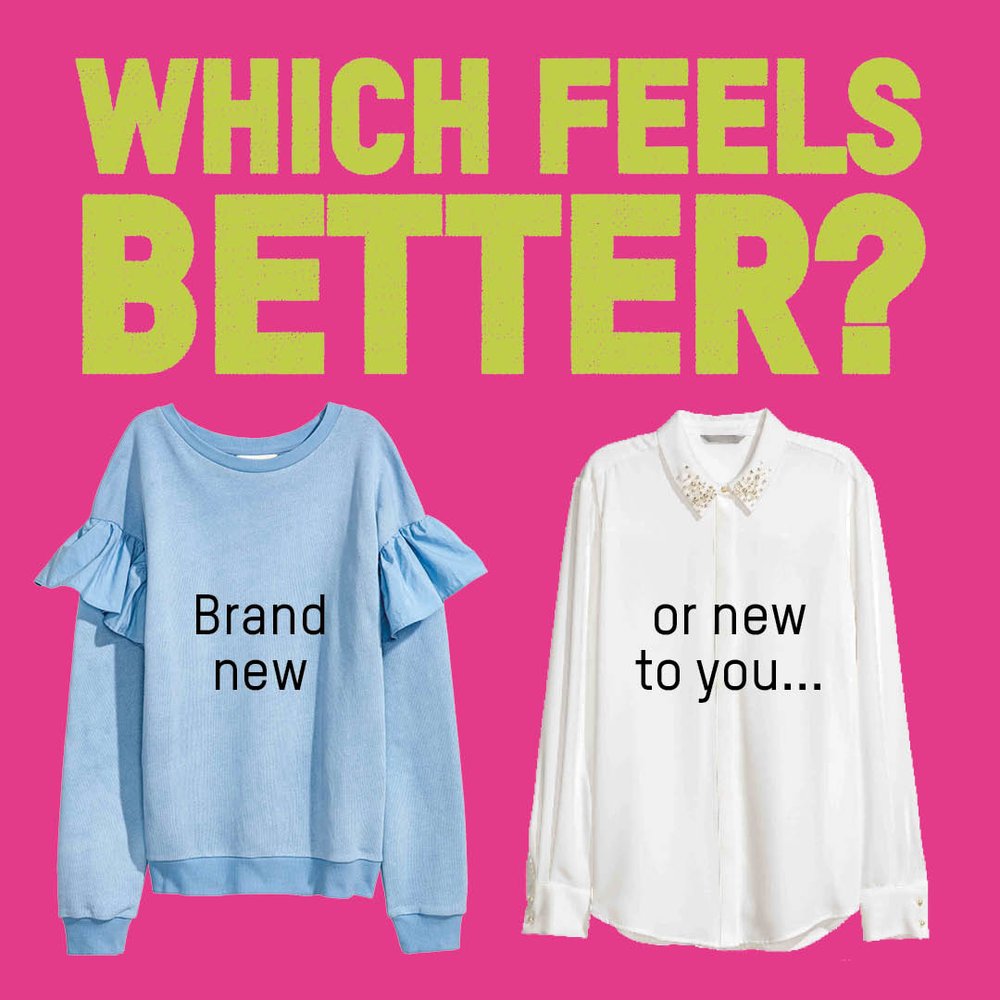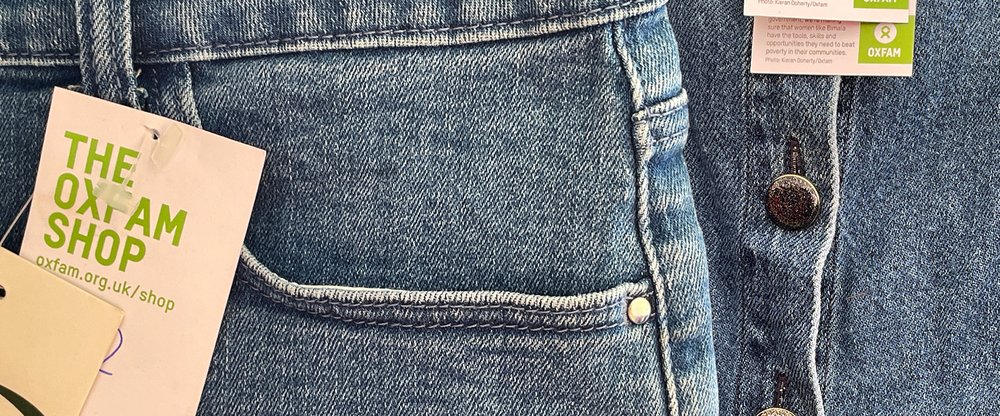Does the thrill of buying a new item of clothing last longer when you buy second hand?
Which makes you feel better? Buying brand new or New-to-You?
I'm Dr Carolyn Mair, a cognitive psychologist working in the fashion industry, and I’m thrilled to say that Oxfam teamed up with me to deep dive into how our shopping habits make us feel.
Oxfam

How soon does the thrill of buying a new item of clothing fade?
Our research revealed the thrill of buying a new item of clothing fades on average after just four wears. But, interestingly, nearly a quarter of us say the thrill lasts longer when we buy second hand.
Nearly a quarter of us say the thrill lasts longer when we buy second hand.”
Dr Carolyn Mair, cognitive psychologist, UK
Oxfam’s study of 2,000 adults revealed...
- Almost half (47%) enjoy shopping for brand new clothing - but they reported that the thrill doesn't last long.
- For 22%, the excitement of the item's 'newness' fades fast.
- A further 17% start to doubt if they actually liked what they'd bought once their shopping high subsides.
- The average Brit spends £70 a month on refreshing their wardrobes, although a fifth will spend £100 or more.
How many people look for bigger savings on clothes?
As the cost of living crisis continues to bite, three-quarters of those surveyed said that they look for bigger savings when shopping for clothes.
How can people make the thrill of buying new clothes last longer?
We can make new clothes last longer by looking after them when we’ve bought them e.g., careful laundering and repairing where possible.
How can we get a buzz from retail therapy without buying brand new?
Garments don't have to be brand new for us to benefit from retail therapy. More than half the respondents said they believe buying 'new' clothes doesn't necessarily mean buying brand new - as long as it's new to them.

Fortunately we can achieve a positive outcome - by giving our clothes meaning, buying what we know we will love for a long time, caring for our clothing once we have it, and not only buying brand new. Engaging with fashion this way has the same positive effect on the brain as buying brand new, and it's also better for the environment. Preloved fashion can make us feel just as happy as a brand-new item would as it would be ‘new to me’.”
Dr Carolyn Mair, cognitive psychologist, UK
As good as new
Our brains are stimulated by novelty. But we become accustomed to new things quickly. Over a relatively short period of time, what was once new and exciting no longer appeals to us.
One reason for this is the release of dopamine which motivates us to seek a desirable outcome in a specific context. For example, by helping us deal with a negative experience, and finding a way to get a pleasurable experience.
But once we have achieved the outcome, dopamine levels drop and so when the ‘pleasure’ effect wears off, dopamine motivates to hunt for another desirable outcome. In the context of clothing, the release of dopamine motivates us to seek a positive outcome by buying a new item to replace the items that we have become used to. Fortunately, we can achieve a positive outcome - by giving our clothes meaning, buying what we know we will love for a long time, and not only buying brand new. Engaging with fashion this way has the same positive effect on the brain as buying brand new, and it's also better for the environment. Preloved fashion can make us feel just as happy as a brand-new item would as it would be ‘new to me’.
Why shopping at charity stores like Oxfam makes us feel good and do good
We all wear clothes, and most of us love how fashion can make us feel good by helping us show our best selves to the world. Most people also love a bargain.
When we shop at a charity shop like Oxfam, we can be sure that what we buy will cost far less than it did when it was new.
Another positive about second hand shopping is that it gives us a dopamine kick during the ‘hunt’.
Dopamine motivates us to achieve a desirable outcome and what could be more desirable than finding an amazing fashion piece at an amazing price that also does good for the charity and the planet.
Doing something good for someone else is the best way to feel good about ourselves. We all get used to what was once exciting and this is just as true about fashion as it is about chocolate cake.
The great thing is, when we tire of what we have, which has been found to be after only four wears on average, we can take it to the charity shop so that someone else can give it life and get pleasure from it.
Buying second hand makes us feel good in multiple ways: It’s good for us, good for the charity and good for the planet.
How does buying new fashion make consumers feel?
Our research shows that shoppers can feel guilty about buying fashion items because they’ve overspent or bought something they didn’t actually need. Consumers are becoming more aware of the negative effects of the fashion industry, which in 2019 was reported to account for 10% of global CO2 emissions.
The research also found...
- Nearly half (46%) also get a real kick out of making a big saving on a clothing purchase. And charity shops are the most popular destination for second hand goods as buyers tighten their purse strings.
- The average spend on refreshing our wardrobes is £70 a month.
- Our research showed that over half (57%) reported feeling happier with themselves when they manage to pick up a discounted item.
Oxfam is encouraging people to shop second hand in September. To show that there is an alternative to buying new clothing. And that it not only makes them feel good, it is also better for the planet.
Looking for food or other goods? Explore our resources on Fairtrade chocolate, food, and other products.
